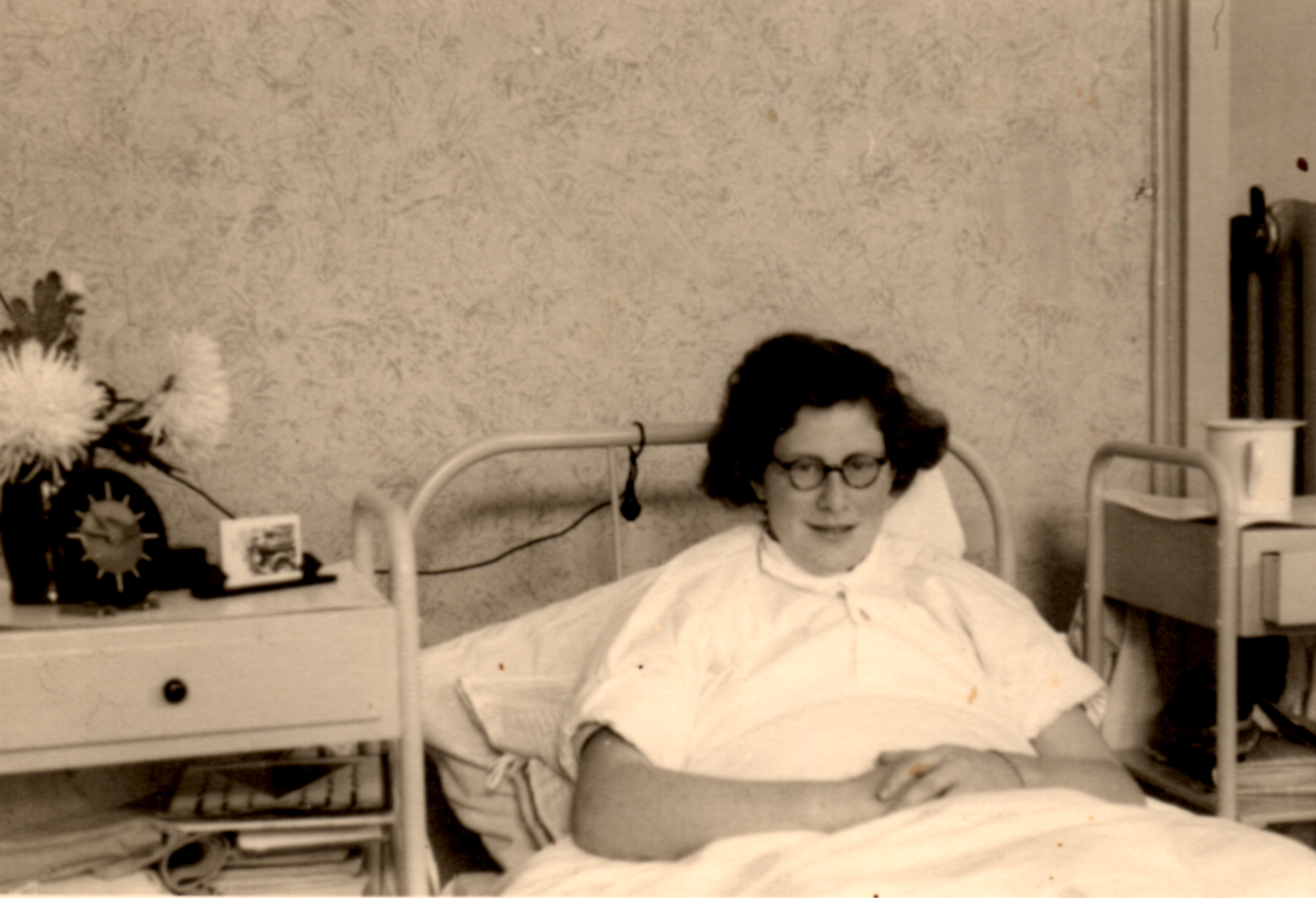Annelore Beem - Daniel
Annelore Daniel was in camp Bergen-Belsen along with Anne and Margot Frank and Auguste van Pels. Eventually, as with Auguste, Annelore was transported to Raguhn and later to Theresienstadt.
Annelore Daniel was born in Berlin on 20 August 1927. She lived there until 1933 with her father Hans Daniel (1897-1944), mother Selma Daniel-Lion (1897-1944) and her two-year-older sister Ellen (1925-2005). Her father Hans Daniel was an engineer at the Nora-GMBH factories, but was fired immediately with the entry into force of the first anti-Jewish measures on 1 April 1933. He then decided to investigate whether the family could make a living in the Netherlands.[1]
After her father got a position at an electronics engineering firm in Amsterdam, her mother followed, taking over responsibility for administration at the firm, while Annlelore and her sister stayed with an aunt in Schwedt an der Oder.[1] In the summer of 1933, they also came to the Netherlands and the family lived at 37 Parnassusweg in Amsterdam-Zuid. In August 1936, the family moved to Albrecht Durerstraat 25, before moving to a house a street away, at Rubensstraat 64, in April 1939.[2]
Annelore went to Sparta School on Stadionkade immediately after the 1933 summer holidays and learnt Dutch within weeks. When Jewish children had to go to separate schools in 1941, she attended the Jewish MULO school on Christiaan de Wetstraat for a year.[1]
Concentration camps
In early November 1942, the family was taken from their home in the morning and had to wait in the Hollandsche Schouwburg for several days. The family finally arrived at Westerbork camp on 10 November. Although her father's sperre could have protected the family from deportation for a long time, on 21 April 1943 Annelore's parents were put on a transport to Theresienstadt.[3] Annelore and her sister Ellen remained behind in Westerbork and from then on was one of the so-called 'T-children': the children in Westerbork whose parents were in Theresienstadt. After her parents were deported, Annelore worked in the Westerbork hospital on the baby ward.[1]
On 18 January 1944, nine months after their parents were deported, Annelore and Ellen Daniel were also transported to Theresienstadt and reunited with their parents.[4] Annelore recalls: 'and at one point we see father. And he jumped in the air, really, literally and figuratively and ran away. And I don't know, it felt like a very short time later he came back with my mother.'[1] The family eventually spent nine months in Theresienstadt, until they were put on a transport to Auschwitz on 28 October 1944.[5] Once there, both her mother and father were gassed.[3]
The Daniel sisters spent several days in Auschwitz and, like Anne and Margot Frank, were deported from Auschwitz-Birkenau to Bergen-Belsen on the 1 November 1944 transport. According to Janny Brilleslijper (1916-2003), the Daniel sisters, the Frank sisters, Auguste van Pels and several other Dutch prisoners there formed a close-knit group with her and her sister Rebekka Brilleslijper (1912-1988).[6]
Annelore recalled that in the camp huts, Margot and Anne Frank were always inseparable together with Auguste van Pels. She also recalled that Anne, Margot and Auguste were in an apathetic and desperate state in the camp.[1]
On 7 February 1945, like Auguste van Pels and 26 other Dutch women, Annelore was selected for employment at Raguhn, a sub-camp of Buchenwald concentration camp. After three days of travelling, the women arrived and were registered. Annelore was given prisoner number 67099.[7] In Raguhn, the women had to assemble aircraft parts.[8]
Liberation
On 9 April 1945, the women were again transported in Raguhn due to the approaching US troops. After a chaotic journey, Annelore arrived in Theresienstadt on 16 April.[9] Auguste van Pels had died on the train on the way. Annelore recalled that they had lifted Auguste out and laid her next to the railway tracks.[1] On 8 May 1945, Theresienstadt was liberated by the Soviet army.[10]
Annelore was found to have tuberculosis and recovered after the war in Sandpoort, alongside a former classmate of Anne's, Nanette Blitz (1929). When Otto Frank visited Nanette Blitz in 1945 to hear more about the last days of his two daughters, Annelore was able to add to Blitz's story and told Otto about her last meetings with Anne and Margot and the death of Auguste.[11] It eventually took Annelore three years to recover from the illness and, as she herself put it, that is why her liberation did not come until 14 May 1948.[1]
Addresses: Germany, Berlin; Netherlands, Amsterdam: Parnassusweg 37 ('33), Albrecht Durerstraat 25 ('36), Rubensstraat 64 ('39).[2]
Footnotes
- a, b, c, d, e, f, g, h Anne Frank Stichting (AFS), Getuigenarchief, Interview met Annelore Beem-Daniel, 19-05-2014.
- a, b Stadsarchief Amsterdam, Dienst Bevolkingsregister, Archiefkaarten (toegangsnummer 30238): Archiefkaart Hans Daniel, 27-09-1897.
- a, b Arolsen Archives - International Center on Nazi Persecution, Bad Arolsen: Joodsche Raad kaart Hans Daniel, Document ID: 130277498, (geraadpleegd 8 november 2022); Joodsche Raad kaart Selma Lion, Document ID: 130277517.
- ^ Arolsen Archives: Joodsche Raad kaart Annelore Daniel, Document ID: 130277493.
- ^ Arolsen Archives: Transportkaart Annelore Daniel, Document ID: 4967778; Joodsche Raad kaart Annelore Daniel, Document ID: 130277493.
- ^ Bas von Benda-Beckmann, Na het Achterhuis. Anne Frank en de andere onderduikers in de kampen, Amsterdam: Querido, 2020, p. 240.
- ^ Arolsen Archives: Registers van gevangenennummers Buchenwald (vrouwen), Document ID: 5403101.
- ^ Von Benda-Beckmann, Na het Achterhuis, p. 263.
- ^ Von Benda-Beckmann, Na het Achterhuis, p.265-266.
- ^ Von Benda-Beckmann, Na het Achterhuis, p. 266.
- ^ Von Benda-Beckmann, Na het Achterhuis, p. 267.
